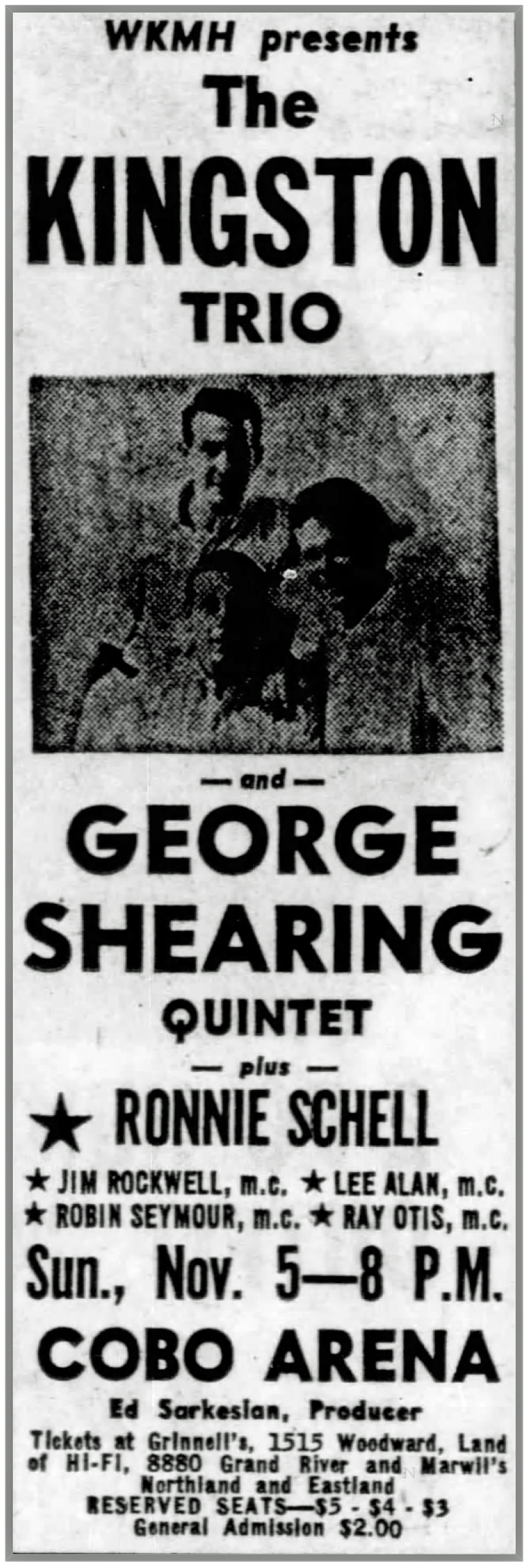 KXOK was a prominent radio station in St. Louis in the early-1960s. KXOK was known for its Top 40 format and was especially popular among teens and young adults. The station featured many well-known radio personalities, including Ray Otis.
KXOK was a prominent radio station in St. Louis in the early-1960s. KXOK was known for its Top 40 format and was especially popular among teens and young adults. The station featured many well-known radio personalities, including Ray Otis.
Ray Otis, who arrived from WKMH in Dearborn, MI., became the station’s program director in 1962 at just 24. Otis recalls how KXOK came to be a magical place. He joined a station that had been initially launched by manager Bud Connell, and his mission was to guide it through its next phase. “There was magic at KXOK like no other place I’ve seen,” Otis says. “Everything just fell together. The synergy was incredible.” The station’s home was a small grove of trees at 1600 North Kings Highway, which it affectionately named “Radio Park.”
When this aircheck was recorded, Ray Otis was heard weekdays on KXOK in St. Louis from 3 p.m. to 7 p.m.
According to the stlmediahistory.org website, KXOK was owned by Todd Storz, part of his network of AM stations known for their rock and roll formats. Thanks to station veteran Dick Ulett, we list an array of names that defined KXOK:
 Mort Crowley, Danny Dark, Ron Riley, Peter Martin, Robert R. Lynn, Bob Shea, David D. Rogers, Dan Allison, Johnny Rabbitt, Don “Stinkey” Shafer, Richard Ward Fatherly, Nick Charles, Bruno J. Grunion, William A. Hopkins, Big Ears Bernard, Steven B. Stevens, Bobby Shannon, Delcia Corlew, Chickenman, News at 55, Radio Park, and the station’s slogan, “The station with the happy difference.”
Mort Crowley, Danny Dark, Ron Riley, Peter Martin, Robert R. Lynn, Bob Shea, David D. Rogers, Dan Allison, Johnny Rabbitt, Don “Stinkey” Shafer, Richard Ward Fatherly, Nick Charles, Bruno J. Grunion, William A. Hopkins, Big Ears Bernard, Steven B. Stevens, Bobby Shannon, Delcia Corlew, Chickenman, News at 55, Radio Park, and the station’s slogan, “The station with the happy difference.”
The station’s building sat across from the old Parkmoor, housed in a converted old house with the studios added on. The house’s front room served as the reception area, and the rest was used for storage. Out front, facing Kingshighway, stood the green 3-foot-tall letters “KXOK,” a remnant from its previous location at the Star-Times Building downtown.
Ray Otis was at KXOK from 1962 to 1970, when he left for New York’s WNEW. Later in 1970, Otis returned back to Detroit for WCAR.
USARM Note: Most of the above information was provided by the St. Louis Media History website.
NEW! A special THANK YOU to Mark Yurko, of Langhorne, PA., for this KXOK aircheck contribution for our USA Radio Museum repository. Featured here, we’ve archived this 1964 WXOK audio memory into our aircheck collection.
AUDIO REMASTERED! This audio recording was digitally enhanced by USA Radio Museum.
![]()
















